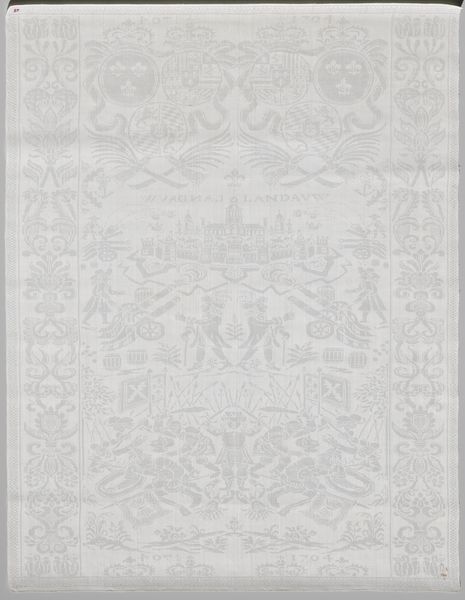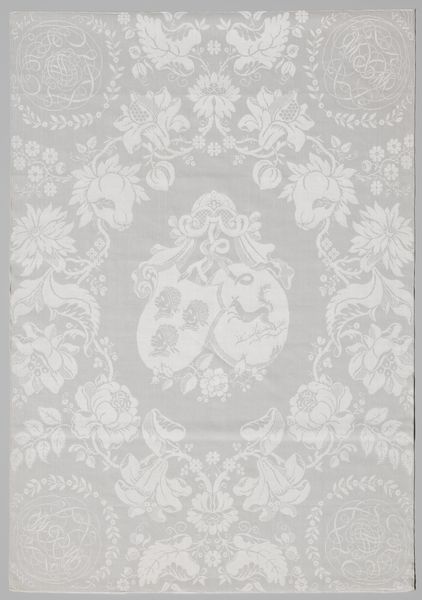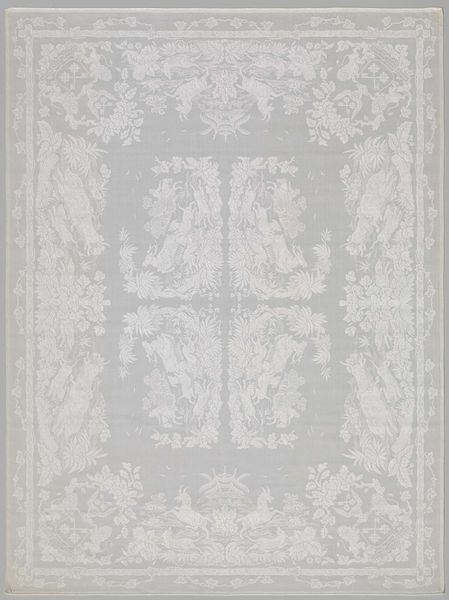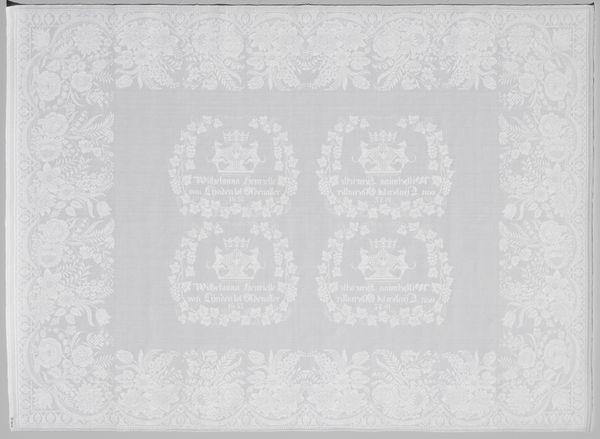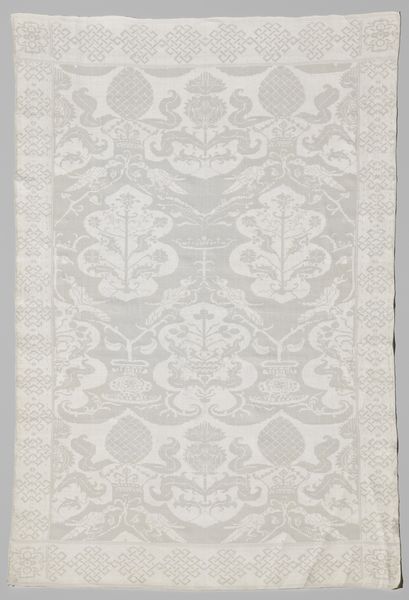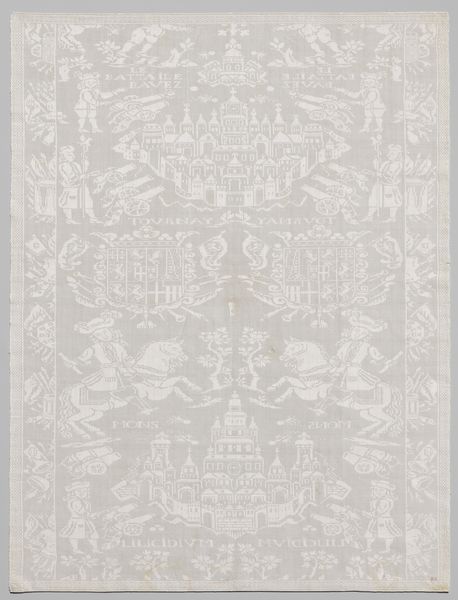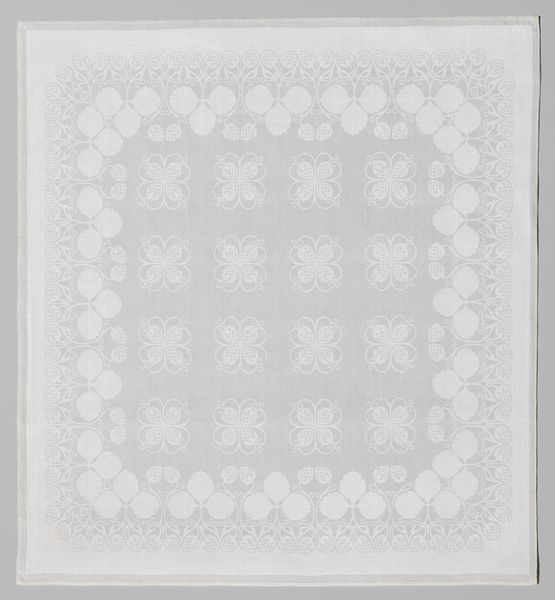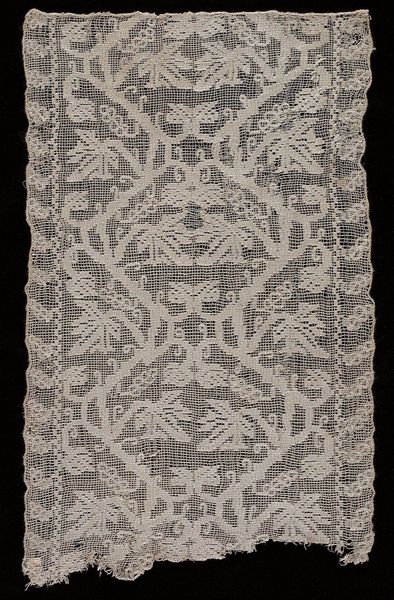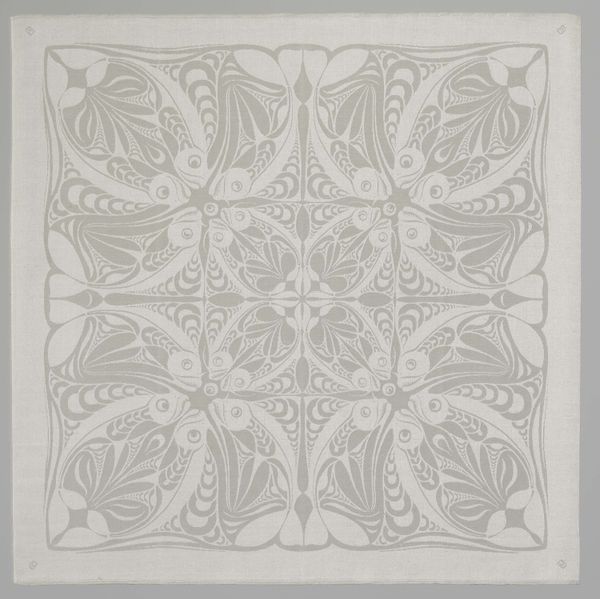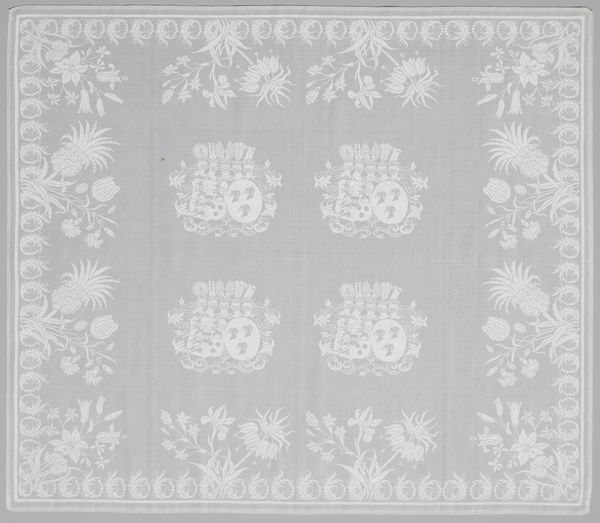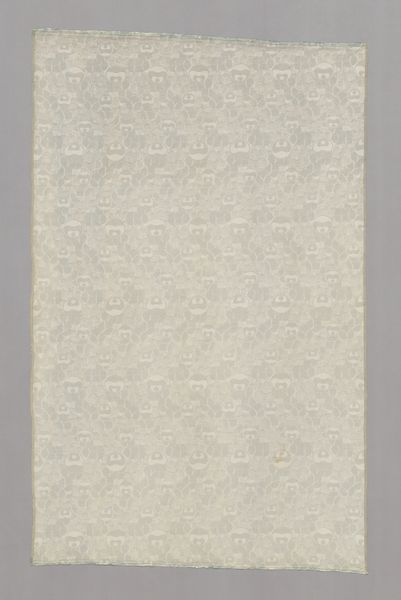
Servet van wit linnendamast met gestrooide bloemen en in de hoeken het gevierendeelde wapen Rijckaert-Bartolotti van den Heuvel c. 1660 - 1670
0:00
0:00
weaving, textile
#
organic
#
baroque
#
weaving
#
textile
#
geometric pattern
#
organic pattern
#
geometric
#
decorative-art
Dimensions: height 82 cm, width 116 cm
Copyright: Rijks Museum: Open Domain
Editor: This is a white linen damask napkin from around 1660 to 1670, decorated with scattered flowers and the Rijckaert-Bartolotti van den Heuvel coat of arms in the corners. The monochrome simplicity is striking; what significance did items like this hold at the time? Curator: This napkin speaks volumes about the socio-political landscape of the Dutch Golden Age. Linen damask was a luxury item. Possessing such intricately woven textiles signaled wealth and status within merchant society. How does knowing this inform your view of the imagery and design? Editor: Well, knowing it was valuable, I see the scattered flowers as less of a random pattern, and more like a carefully cultivated garden, almost like a demonstration of wealth. And those heraldic symbols – were they just decorative? Curator: Not at all. Heraldry was extremely important. The coat of arms would have instantly identified the owner, reinforcing their family's standing in the community. Think of it as a public assertion of power and lineage. It wasn’t just about eating; it was about performance, wasn't it? Editor: So, every dinner party became a stage! It’s fascinating to consider how everyday objects served a much grander purpose. The visual opulence also challenges my idea of Dutch society, I feel there were sides of opulence beyond the classic still life. Curator: Exactly! Museums often reinforce familiar narratives, while something like this reveals overlooked layers. Considering such pieces helps broaden our understanding of the social fabric of the past. What do you think about museums showing objects like this more often? Editor: I'd love that. It's such a tangible way to connect with the lives of people from centuries ago. These objects can rewrite certain art history assumptions. Curator: Precisely! This helps us understand the intersection between artistic expression, material culture, and social identity in history.
Comments
No comments
Be the first to comment and join the conversation on the ultimate creative platform.
